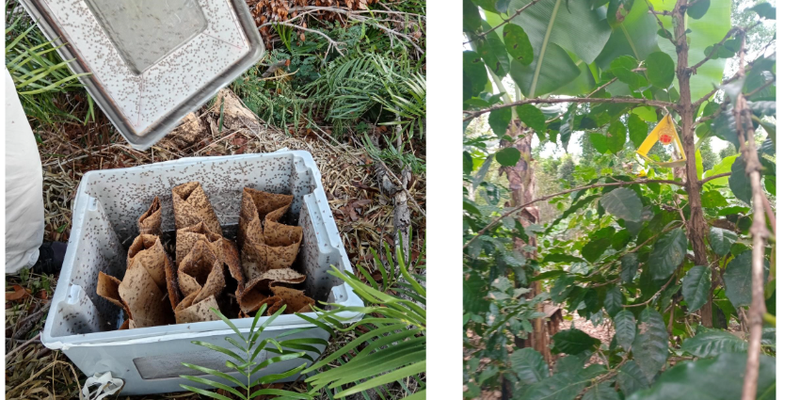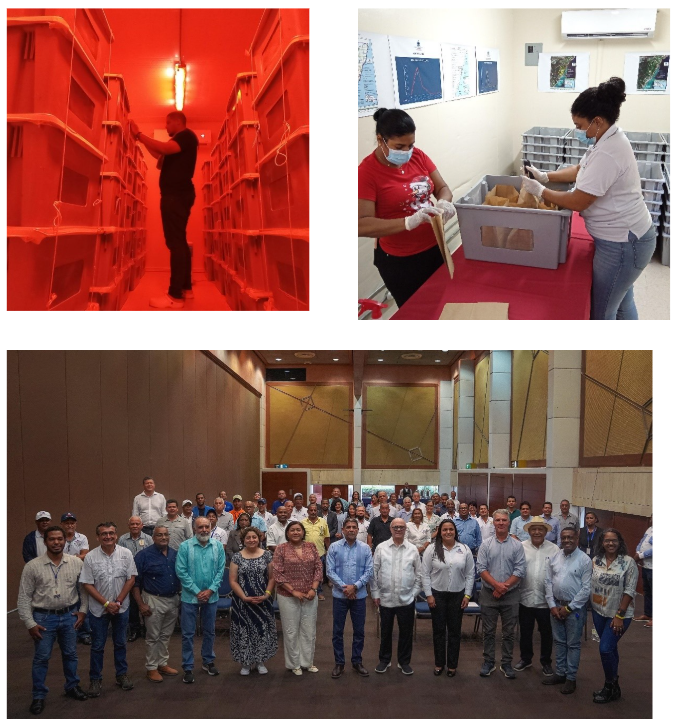SPOTLIGHT: Dominican Republic leads with One Health innovation to safeguard food security
Posted on Mon, 12 May 2025, 16:12

Early detection, cross-sectoral action, and regional cooperation protect plant health, livelihoods, and public well-being. ©NPPO Dominican Republic
As an island nation deeply reliant on agriculture and tourism, the Dominican Republic faces unique risks from the introduction and spread of plant pests. These threats—intensified by global trade, tourism, and climate change—can jeopardize key crops such as plantains, beans, and fresh fruits, with direct consequences for food security, livelihoods, and public health.
In response, the Dominican Republic has emerged as a leader in applying the One Health approach to strengthen biosecurity. By recognizing the interconnectedness of plant, human, animal and environmental health, the country is demonstrating how science-driven strategies can prevent crises before they spread.
Eradication success: a blueprint for action
With technical support from the Organismo Internacional Regional de Sanidad Agropecuaria (OIRSA), the country’s national plant protection organization (NPPO) has implemented a robust early warning and monitoring system. This system combines satellite imagery, geolocated adhesive and attractant traps, targeted field surveillance, and real-time risk mapping. These tools enabled the rapid detection and successful eradication of the Mediterranean fruit fly (Ceratitis capitata) and the effective containment of the invasive bean flower thrips (Megalurothrips usitatus), which threatened vital food crops.
Most recently, in December 2023, the NPPO detected a medfly outbreak near Punta Cana. This posed a serious threat to export crops and international market access. However, immediate action was taken under a national emergency protocol, and within just nine months, the outbreak was fully eradicated. This record achievement reflects an extraordinary coordination effort involving the Ministry of Agriculture, OIRSA, the United States Department of Agrilcuture Animal and Plant Health Inspection Service (USDA APHIS), the International Atomic Energy Agency (IAEA),the Food and Agrilcuture Organization of the United Nations (FAO), Mexico’s Servicio Nacional de Sanidad, Inocuidad y Calidad Agroalimentaria (SENASICA), and the trinational Medfly Programme.
The response included:
- Establishing a defined eradication zone
- Intensifying trap density for surveillance
- Applying mechanical, cultural and chemical controls
- Pruning trees and eliminating millions of fallen fruits
- Deploying 72 million sterile flies over 24 weeks using the Sterile Insect Technique
- Conducting fruit sampling, lab diagnostics and creating a phytosanitary cordon
This rapid, science-based intervention protected key export crops, such as mango, avocado, citrus and papaya, valued in the millions of dollars and upheld the country’s reputation as a trusted agricultural exporter.
“Early detection and rapid response are the backbone of effective plant health management,” said Rosa M. Lazala, Director of the Plant Health Department, Ministry of Agriculture, Dominican Republic. “By integrating advanced technologies with local expertise, we've not only protected our crops and economy but also reduced pesticide use and safeguarded public health. This is One Health in action, and it’s a model we hope can inspire other countries facing similar threats,” she added.
A regional model for resilience
The Dominican Republic’s success was also shared with the international community through a simulation involving experts from 13 countries from the region—reinforcing the value of preparedness and cooperation. This integrated response reduced reliance on chemical pesticides, lowered environmental risks, and safeguarded public and animal health—clearly illustrating the power of the One Health approach.
This achievement shows how even small island states can lead in innovation and resilience. International cooperation, especially through OIRSA, IAEA, and FAO, was instrumental in building national capacity. The experience stands as a compelling case of how timely investments in surveillance, emergency response, and cross-sector coordination can yield lasting benefits for food security and public health.

©NPPO Dominican Republic
Related information
One Health in action: Dominican Republic protects crops and communities
CPM-19 Science Session: the importance of plant health within One Health

